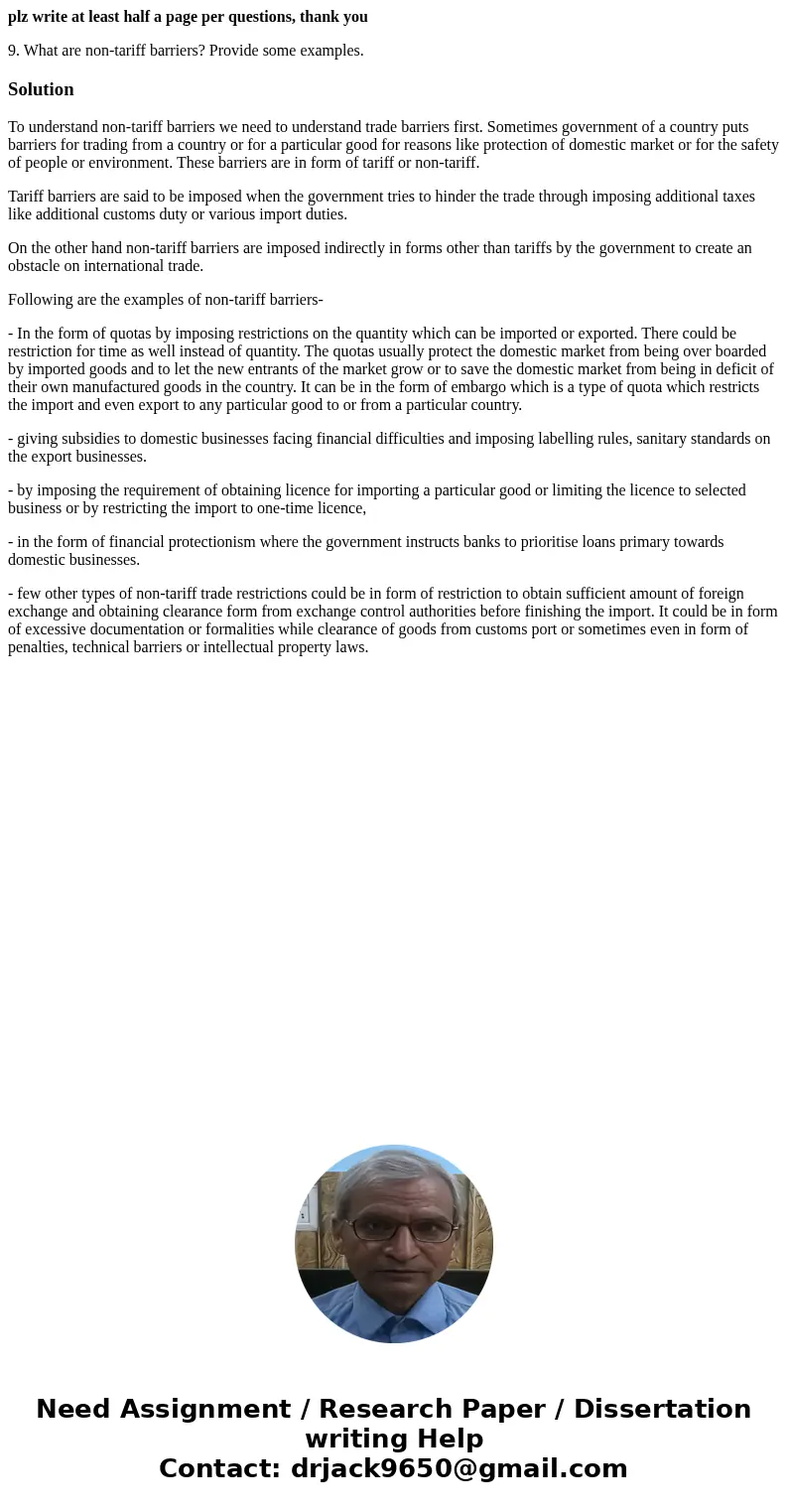plz write at least half a page per questions thank you 9 Wha
plz write at least half a page per questions, thank you
9. What are non-tariff barriers? Provide some examples.Solution
To understand non-tariff barriers we need to understand trade barriers first. Sometimes government of a country puts barriers for trading from a country or for a particular good for reasons like protection of domestic market or for the safety of people or environment. These barriers are in form of tariff or non-tariff.
Tariff barriers are said to be imposed when the government tries to hinder the trade through imposing additional taxes like additional customs duty or various import duties.
On the other hand non-tariff barriers are imposed indirectly in forms other than tariffs by the government to create an obstacle on international trade.
Following are the examples of non-tariff barriers-
- In the form of quotas by imposing restrictions on the quantity which can be imported or exported. There could be restriction for time as well instead of quantity. The quotas usually protect the domestic market from being over boarded by imported goods and to let the new entrants of the market grow or to save the domestic market from being in deficit of their own manufactured goods in the country. It can be in the form of embargo which is a type of quota which restricts the import and even export to any particular good to or from a particular country.
- giving subsidies to domestic businesses facing financial difficulties and imposing labelling rules, sanitary standards on the export businesses.
- by imposing the requirement of obtaining licence for importing a particular good or limiting the licence to selected business or by restricting the import to one-time licence,
- in the form of financial protectionism where the government instructs banks to prioritise loans primary towards domestic businesses.
- few other types of non-tariff trade restrictions could be in form of restriction to obtain sufficient amount of foreign exchange and obtaining clearance form from exchange control authorities before finishing the import. It could be in form of excessive documentation or formalities while clearance of goods from customs port or sometimes even in form of penalties, technical barriers or intellectual property laws.

 Homework Sourse
Homework Sourse